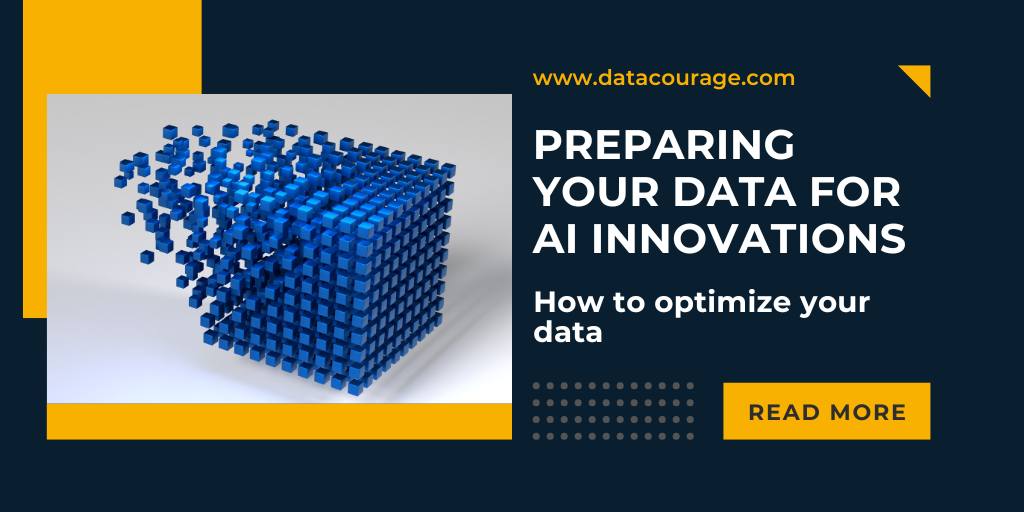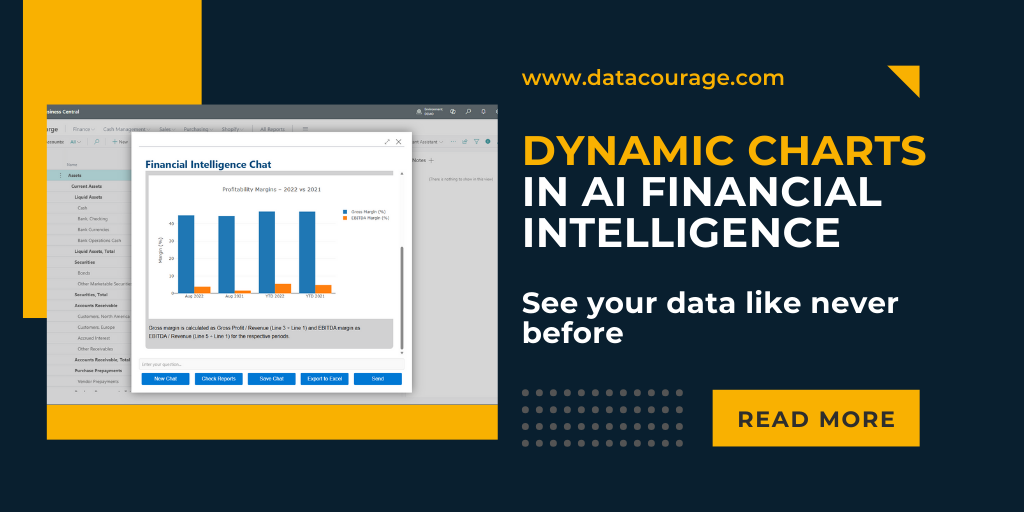Preparing your data for AI innovations
With growing interest in AI, business leaders are recognizing a fundamental reality: without broad and diverse datasets, AI cannot reliably identify...
![[Part II] Preparing your data for AI innovations](https://www.datacourage.com/hubfs/Blog%20%2838%29.png)
The AI revolution isn’t coming — it’s already here. However, for businesses to achieve real results, they must first address a major challenge: data readiness.
In part 1 of this series, we explored the foundational issues holding AI initiatives back — poor data quality, siloed systems, and inconsistent access to real-time information. Now it’s time to go deeper and examine what an AI-ready data foundation really looks like.
This guide breaks down the three non-negotiable requirements for building a modern data environment that enables AI, machine learning, and advanced analytics to thrive.
To deliver real value from AI, your data strategy needs more than just tools. You need capabilities, architecture, and platforms that are built to scale and work together.
Preparing your data for AI starts with establishing a strong operational foundation — a data pipeline that ensures information is collected, transformed, and made usable across every team. Key capabilities to prioritize:
data integration
Pull together structured and unstructured data from across systems. This creates a unified foundation, whether your inputs come from CRM, IoT, ERP, or custom sources.
data transformation
AI models depend on clean, reliable data. This includes normalizing formats, handling missing values, reducing noise, and engineering features that improve model performance.
real-time data streaming
Real-time insights fuel real-time decisions. Streamed data from transactions, sensors, and user interactions enables AI to act immediately — not hours later.
smart data querying
Teams need intuitive, self-service access to data. Ad hoc SQL queries, semantic layers, and low-code tools speed up insight generation without IT bottlenecks.
data visualization
Whether using Power BI, dashboards, or custom charts — visualizing AI outputs makes results accessible to business users and actionable at speed.
cross-functional access
Ensure analysts, engineers, data scientists, and business leaders work from the same data — avoiding duplication, errors, and time wasted reconciling versions.
Outdated infrastructure is one of the most common — and costly — barriers to scaling AI.
Traditional data warehouses are great for structured analytics, but they’re rigid and expensive to scale. Data lakes offer flexibility and cheap storage, but they’re unstructured and hard to query. That’s why leading organizations are adopting a lakehouse architecture — a hybrid model that combines the best of both worlds.
A data lake stores raw, unstructured data — flexible and scalable, ideal for data science but not fast to query.
A data warehouse stores clean, structured data — optimized for BI and dashboards but hard to scale for diverse data types.
A lakehouse combines both: it lets you store everything in one place, analyze it with speed, and support both AI and business reporting in a unified way.
This modern architecture enables:
scalable storage and compute for huge, diverse datasets
a single source of truth for all teams and use cases
real-time data ingestion to keep dashboards and models always up to date
built-in governance and security to ensure compliance and data trust
With a lakehouse, you eliminate silos, reduce duplication, and give your AI models the environment they need to succeed.
Even with clean data and modern architecture, AI can stall if your tools don’t work together.
Most organizations rely on a patchwork of disconnected tools — one for business intelligence, another for ETL, another for machine learning. This leads to data duplication, versioning headaches, and long delays between insight and action.
The solution is platform unification — bringing your data engineering, streaming analytics, machine learning, and BI workflows together in a single, integrated environment.
That’s exactly what tools like Microsoft Fabric and Azure Databricks are built to deliver.
With these platforms, you get:
OneLake: a shared cloud-scale data layer, so all teams access the same data
shortcuts instead of copies: access datasets virtually — no duplication, no waiting
MLflow integration: train, track, and deploy models in one place
With unified platforms, your teams move faster, collaborate better, and deliver AI results that are trusted, explainable, and scalable.
An AI-powered business starts with a data-powered foundation. Before diving into new models or automation tools, ask yourself:
Are your data sources integrated and reliable?
Is your architecture built to scale — or patchworked together?
Can your teams collaborate on shared data without friction?
If the answer to any of those is “not yet,” now is the perfect time to modernize your approach.
Whether you're starting from scratch or scaling an existing initiative, the right data infrastructure is essential for success.
Our team can help you design, build, and unify a future-ready data platform — from architecture planning to AI model deployment.

With growing interest in AI, business leaders are recognizing a fundamental reality: without broad and diverse datasets, AI cannot reliably identify...
%20(1024%20%C3%97%20512%20px)%20(13).jpg)
We do not want to bore you with another article about ChatGPT 3.5 or 4. We know that you know that it knows a lot. But have you ever considered why...

Every number in your business reveals something. It may signal a trend, expose a risk, or show where growth is happening. When that data hides in...

With growing interest in AI, business leaders are recognizing a fundamental reality: without broad and diverse datasets, AI cannot reliably identify...
%20(1024%20%C3%97%20512%20px)%20(13).jpg)
We do not want to bore you with another article about ChatGPT 3.5 or 4. We know that you know that it knows a lot. But have you ever considered why...

Every number in your business reveals something. It may signal a trend, expose a risk, or show where growth is happening. When that data hides in...